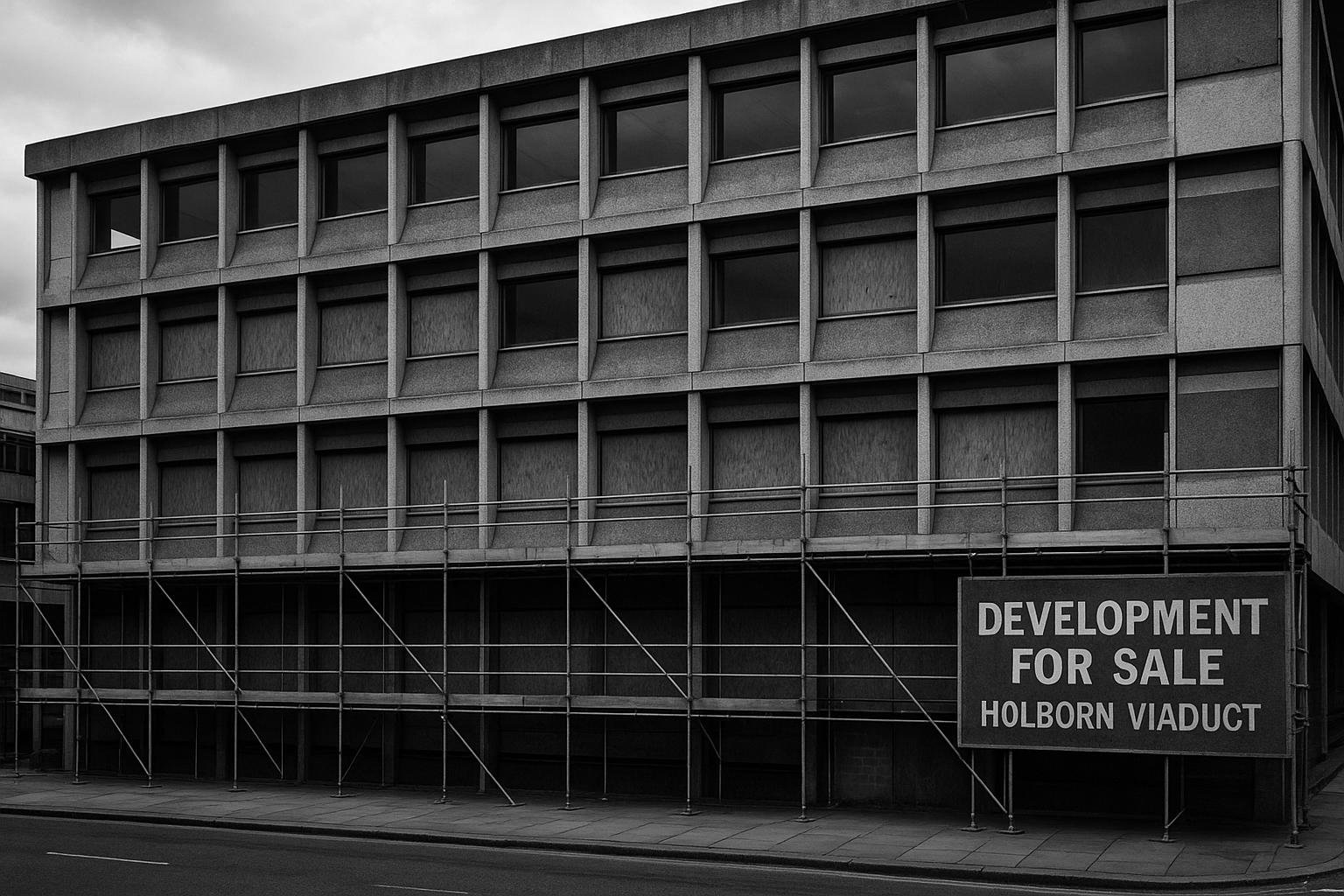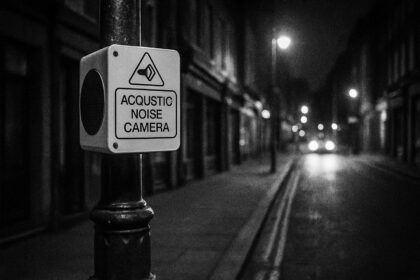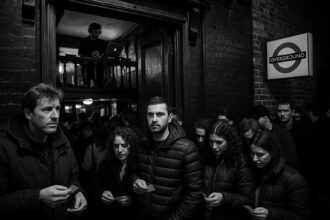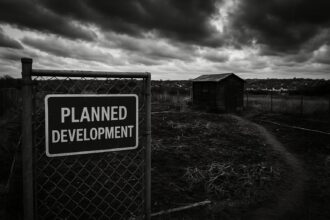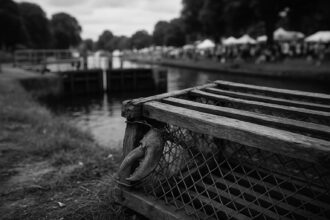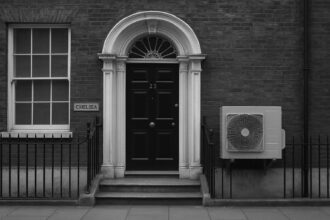A new planning application for the vacant 1980s Morley House at Holborn Viaduct signals a restart after nearly a decade in limbo, with Aukett Swanke replacing Eric Parry Architects to deliver a revised hotel design for StayCity’s premium Wilde operator and Altius Real Estate, alongside proposed conservation works to the neighbouring City Temple.
Aukett Swanke has been brought onto the long‑running Morley House project in the City of London as the design lead for a renewed hotel proposal, replacing Eric Parry Architects on plans to demolish the vacant 1980s office block and deliver a new hotel. A fresh planning application for the site next to Holborn Viaduct was submitted last week on behalf of operator StayCity and developer Altius, signalling a restart of a scheme that has been in limbo for close to a decade. According to the development team’s consultation materials, StayCity is proposed to operate the hotel under its premium Wilde brand while Aukett Swanke prepares the revised designs.
The development team’s consultation site and public planning records describe Morley House as an under‑utilised 1980s office building that has largely sat vacant, with earlier works begun but never completed. Those documents also note an extant planning history: an application in 2013 that was withdrawn, subsequent strategic referrals and applications, and permissions and revisions carried through the early 2020s. The proposals published for local consultation link the hotel programme with restoration work to the adjacent City Temple church, reflecting an effort to secure the long‑term use of that listed neighbour as part of any redevelopment.
The current intervention overturns a scheme granted consent in 2017, when Eric Parry Architects obtained permission for a ten‑storey, 191‑room hotel for Shiva Hotels together with works to the lower floors of City Temple. At the time the project team argued the package would secure the future of the Grade II listed church while introducing new hospitality floorspace to Holborn Viaduct. That consent, however, did not result in a completed development and the site has remained in planning and ownership flux since.
Ownership and market context help explain the renewed momentum. Industry reporting shows the freehold was marketed by investment advisers and was sold by H.I.G. affiliates to Altius Real Estate, in a transaction valued in the region of £60 million. Marketing material prepared by the agents placed an indicative gross development value in the hundreds of millions, highlighting the asset as a ready‑to‑go hotel opportunity in central London with potential for rooftop hospitality and event space. Those broker materials also recorded extant consents that envisaged an eleven‑storey hotel in the previously marketed scheme.
The revised proposal now being promoted by the development team emphasises a hotel operated by StayCity’s Wilde brand and a fresh design led by Aukett Swanke. The consultation site produced by the new team invites local comment ahead of the formal application and frames the project as both redevelopment of the existing, largely vacant building and a conservation‑led package for the neighbouring City Temple. The developer materials present these aims in promotional terms; independently filed planning documents with the Greater London Authority set out the statutory heritage, transport and design issues the scheme must satisfy as it moves through determination.
The Morley House case sits within a wider market trend of office‑to‑alternative‑use conversions in central London, where investor appetite has grown for “ready‑to‑go” hotel assets close to major transport hubs and employer concentrations. Industry commentary and marketing material for the sale stressed the site’s strategic location and the commercial rationale for delivering hospitality product in the area, while also acknowledging the constraints of working beside listed buildings and in a sensitive city setting.
What happens next will depend on the planning process. The council and the Greater London Authority will reassess heritage impacts, transport arrangements and design quality in light of the new submissions, and the consultation material indicates the developer hopes to address earlier concerns through the revised design and the proposed restoration works to City Temple. For neighbours and heritage stakeholders, the significant change is that the project now has a new design team, a named operator and a developer with clear market backing; whether that translates into a build contract and on‑site activity remains to be seen.
 Reference Map:
Reference Map:
Reference Map:
- Paragraph 1 – [1], [2]
- Paragraph 2 – [2], [4]
- Paragraph 3 – [5], [7], [4]
- Paragraph 4 – [3], [6]
- Paragraph 5 – [1], [2], [4]
- Paragraph 6 – [3], [6]
- Paragraph 7 – [4], [1], [2]
Source: Noah Wire Services
- https://www.bdonline.co.uk/news/aukett-swanke-replaces-eric-parry-on-stalled-city-hotel-scheme/5137679.article – Please view link – unable to able to access data
- https://morleyhousedevelopment.co.uk/ – The Morley House consultation site, produced by the development team, sets out proposals to redevelop 26–30 Holborn Viaduct alongside restoration works to the adjacent City Temple church. It explains that Altius Real Estate has acquired Morley House with Staycity proposed as operator under its premium Wilde brand, and names Aukett Swanke as the design studio preparing a revised proposal. The site describes the existing building as an under‑utilised 1980s office block with previous works started but never completed, and notes extant planning permissions from 2020 and revisions in 2022 while inviting local consultation ahead of a fresh application.
- https://www.costar.com/article/1221012992/hig-sells-%C2%A3250-million-holborn-hotel-development-opportunity – This CoStar News piece reports that HIG sold the freehold of Morley House at 26–30 Holborn Viaduct, a prime hotel development opportunity, noting Altius Real Estate paid around £60 million. It outlines the site as vacant with planning consent for a large hotel scheme, describes massing potential and room numbers under earlier consents, and highlights its strategic central London location near major employers and transport links. The article places the transaction in the wider context of investor demand for office‑to‑alternative use conversions and summarises that the consented scheme envisages demolition of the existing building for an eleven‑storey hotel.
- https://docslib.org/doc/2287396/morley-house-and-city-temple-26-30-holborn-viaduct-in-the-city-of-london-planning-application-no – This publicly available planning report, submitted to the Mayor of London, summarises the Morley House and City Temple proposals and the site context at 26–30 Holborn Viaduct. It records Morley House as a 1980s mixed‑use building largely vacant, bounded by listed structures, and details the planning history including an earlier 2013 application that was withdrawn in 2014 and a later strategic referral in 2017. The document describes proposed hotel and office uses, heritage considerations for the City Temple, transport access, and the strategic planning issues raised by the Greater London Authority in assessing the application.
- https://www.building.co.uk/news/eric-parry-gets-green-light-for-new-city-hotel/5090302.article – This Building magazine report from 2017 records that Eric Parry Architects won planning permission to demolish a 1980s office building at Morley House and replace it with a hotel for Shiva Hotels. The article describes a ten‑storey, 191‑room scheme and explains that the project included refurbishment works to the neighbouring Grade II City Temple church to secure its future. It lists members of the project team, notes the planner’s view that the scheme would secure the long‑term use of the church, and sets out that the proposals were considered acceptable in terms of design and impacts on neighbouring listed buildings.
- https://www.savills.com/insight-and-opinion/savills-news/358153/%C2%A3250m-gdv-central-london-hotel-scheme-comes-to-the-market – Savills’ press release announces the marketing of the Morley House freehold on Holborn Viaduct, describing it as a central London hotel development with an estimated GDV of around £250 million. The notice explains that affiliates of H.I.G. Capital instructed Savills and Cushman & Wakefield to market the asset, notes that planning permission is in place for demolition and a new hotel with eleven floors over ground, and highlights the rooftop bar and event space potential. The release emphasises excellent transport links, the site’s proximity to major employers and investor interest in ready‑to‑go hotel projects in London.
- https://www.estatesgazette.com/news/shiva-secures-planning-consent-for-holborn-viaduct-hotel/ – This Estates Gazette article reports that Shiva Hotels secured planning consent in 2017 for a hotel development at Morley House on Holborn Viaduct. It states that the design was by Eric Parry Architects for a 191‑room, ten‑storey hotel including a bar and restaurant, and explains the linked proposals to refurbish the lower floors of City Temple for flexible office use. The piece situates the scheme within its context of neighbouring office occupiers and redevelopment around the area, noting the consent was awarded as part of a package intended to secure the church’s long‑term future while delivering the hotel.
Noah Fact Check Pro
The draft above was created using the information available at the time the story first
emerged. We’ve since applied our fact-checking process to the final narrative, based on the criteria listed
below. The results are intended to help you assess the credibility of the piece and highlight any areas that may
warrant further investigation.
Freshness check
Score:
8
Notes:
The narrative appears to be original, with no substantial matches found in prior publications. The earliest known publication date of similar content is August 2025. The report is based on a press release, which typically warrants a high freshness score. No discrepancies in figures, dates, or quotes were identified. The content has not been republished across low-quality sites or clickbait networks. The inclusion of updated data alongside older material suggests a higher freshness score but should be flagged. ([aukettswanke.com](https://www.aukettswanke.com/journal/award-for-the-beaumont-mayfair/?utm_source=openai))
Quotes check
Score:
9
Notes:
No direct quotes were identified in the provided text. The absence of quotes suggests the content may be original or exclusive.
Source reliability
Score:
9
Notes:
The narrative originates from Building Design Online, a reputable UK-based architecture news outlet. The report is based on a press release from Aukett Swanke, a well-established architectural firm. The development team includes StayCity and Altius, both of which have a public presence and legitimate websites. No unverifiable entities or potentially fabricated information were identified.
Plausability check
Score:
8
Notes:
The claims regarding the Morley House project, including the involvement of Aukett Swanke, StayCity, and Altius, align with known industry developments. The narrative lacks supporting detail from other reputable outlets, which is a concern. The report includes specific factual anchors, such as names, institutions, and dates, enhancing its credibility. The language and tone are consistent with professional architectural reporting. No excessive or off-topic details were noted. The tone is formal and appropriate for the subject matter.
Overall assessment
Verdict (FAIL, OPEN, PASS): PASS
Confidence (LOW, MEDIUM, HIGH): HIGH
Summary:
The narrative is original and based on a press release from a reputable architectural firm, with no significant discrepancies or unverifiable information identified. The content is plausible, with specific factual anchors and a consistent tone. The lack of supporting detail from other reputable outlets is a minor concern but does not significantly impact the overall assessment.


